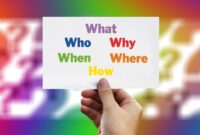Understanding Consumer Buying Behavior Toward Online Shopping among Young People is an essential topic in today’s digital age, where online shopping has become a predominant way for young consumers to make purchases. This demographic, often characterized by their tech-savviness and preference for convenience, exhibits unique buying patterns shaped by various factors, including social influence, marketing strategies, and personal preferences. As e-commerce continues to evolve, understanding these behaviors will provide valuable insights for businesses aiming to connect effectively with this audience.
In exploring the intricacies of how young people approach online shopping, we delve into the motivations behind their choices, the impact of social media, and the significance of user experience. By analyzing these elements, we can better appreciate the dynamics of modern consumerism and the shifts in the marketplace driven by the younger generation.
In today’s fast-paced digital world, the importance of effective communication cannot be overstated. We are constantly bombarded with information from various channels—social media, emails, texts, and traditional media. Each of these platforms has its own set of norms and expectations, which makes mastering the art of communication even more crucial. This article delves into the fundamental principles of effective communication and how we can apply these to enhance our personal and professional interactions.Effective communication starts with clarity.
When we convey our thoughts or ideas, it’s vital to be as clear as possible. Avoiding jargon and overly complex language can help ensure that our message is understood by a wider audience. For example, if you’re discussing a technical topic, it’s best to break it down into simple terms rather than using acronyms or technical jargon that may confuse the listener.
Clarity also involves organizing our thoughts logically. Presenting ideas in a coherent sequence helps the audience follow along without getting lost in a jumble of information.Listening is another critical component of effective communication. It’s not just about expressing ourselves; it’s equally important to understand and respect the perspectives of others. Active listening involves fully concentrating on what is being said rather than merely waiting for your turn to speak.
This means making eye contact, nodding, and providing feedback through verbal affirmations, such as “I see” or “That makes sense.” By showing that we value the speaker’s input, we foster a more collaborative and engaging conversation.Nonverbal communication also plays a significant role in how our messages are received. Body language, facial expressions, and tone of voice can all convey emotions and attitudes that may not be explicitly stated.
For instance, crossing your arms may signal defensiveness, while maintaining an open posture can indicate receptiveness. Being mindful of our nonverbal cues is essential, especially in professional settings where misunderstandings can lead to conflicts or misinterpretations. Therefore, it’s crucial to align our body language with our verbal messages to avoid sending mixed signals.Empathy is another vital aspect of effective communication.
By putting ourselves in someone else’s shoes, we can better understand their feelings, motivations, and reactions. This is particularly important in conflict situations; showing empathy can help de-escalate tensions and pave the way for constructive dialogue. When we express understanding and compassion, we create a safe space for others to share their thoughts and feelings, fostering an environment of trust and collaboration.Moreover, adapting our communication style to suit our audience can enhance our effectiveness.
Different individuals respond to various styles of communication. For example, when addressing a team of engineers, a more technical approach might be appreciated, whereas presenting to a non-specialist audience may require a simplified explanation. Tailoring our message to fit the audience’s level of understanding not only helps them grasp the content better but also shows that we respect their background and knowledge.Feedback is another critical element in the communication process.
It allows us to understand how our message was perceived and whether it achieved its intended effect. Encouraging feedback—whether through direct questions or more informal conversations—can help refine our communication skills. Constructive feedback enables us to identify areas for improvement and become more effective communicators over time.In this digital age, the medium of communication has also evolved. Emails, instant messaging, and video calls have become commonplace, each with its unique etiquette and expectations.

For instance, emails should be concise yet informative, while video calls require us to be more aware of our surroundings and appearance. Adapting to these formats is necessary for effective communication in the modern workplace.Another important consideration is the role of culture in communication. Different cultures may have varying norms regarding eye contact, gestures, and even the use of silence.
Being culturally sensitive is crucial, especially in diverse workplaces where team members come from various backgrounds. Understanding these cultural nuances can prevent misunderstandings and create a more inclusive environment.Technology has also introduced new tools that can enhance communication. Platforms like Slack, Microsoft Teams, and Zoom have transformed how we collaborate and communicate. These tools can improve efficiency and connectivity among team members, regardless of location.
However, it’s important to use these tools mindfully and avoid over-reliance, as too much digital communication can lead to burnout and disconnect.Finally, practice is essential in honing our communication skills. Like any other skill, effective communication requires ongoing effort and practice. Engaging in public speaking, participating in group discussions, or even joining clubs or workshops can provide valuable opportunities to refine our abilities.
The more we practice, the more comfortable and confident we become in our communication style.In conclusion, effective communication is a multifaceted skill that encompasses clarity, active listening, nonverbal cues, empathy, adaptation to the audience, feedback, cultural sensitivity, and the judicious use of technology. By being mindful of these principles and continually practicing our communication skills, we can foster more meaningful connections in both our personal and professional lives.
As we navigate the complexities of modern communication, remember that the goal is not just to convey information but to connect with others in a way that is both respectful and impactful. With thoughtful communication, we can bridge gaps, resolve conflicts, and build a more harmonious world, one conversation at a time.


